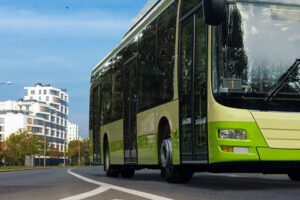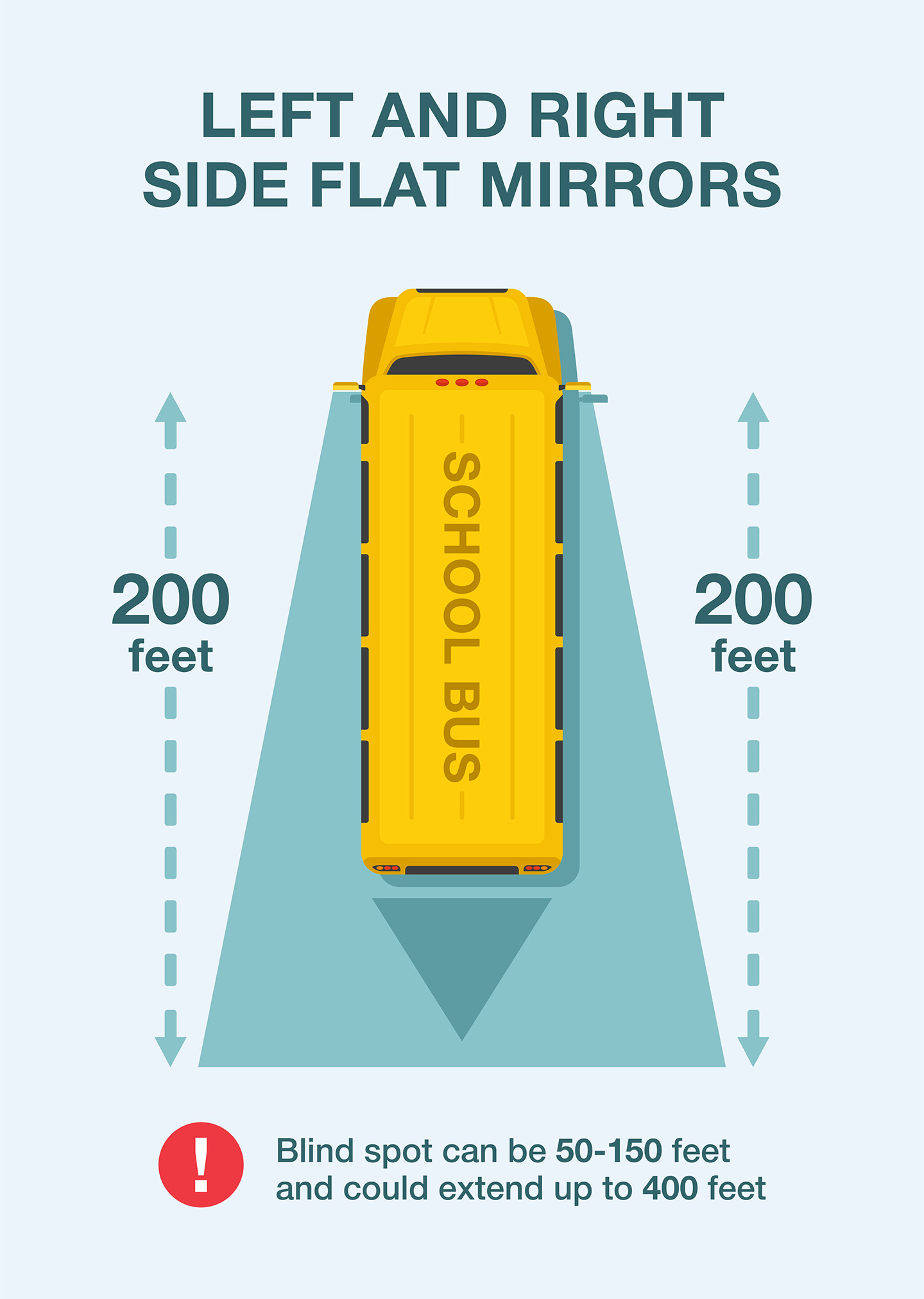
Pedestrian safety is vital, especially in congested areas like cities. It is crucial to stay alert, drive at safe speeds, and be extra cautious when traveling to keep pedestrians safe.
Truck and bus drivers are especially prone to blind spots that make it impossible to see around the entire vehicle. These blind spots can cause traffic fatalities if the driver fails to see pedestrians, cars, or other road users like bicyclists.
Being aware of one’s surroundings and practicing road safety can help prevent crashes and save lives on the road. It is vital to understand blind spots and how to counteract them to improve pedestrian safety.
What is a Blind Spot in Driving?
Modern vehicles have many mirrors and windows to help drivers see the area around them. While these new technologies can help to improve bus or truck blind spots, they may not solve the issue entirely.
Angles that make it hard or even impossible to see what is there are called “blind spots.” A vehicle’s mirror position, shape, and size, factor into the blind spot areas. Large vehicles typically have large side mirrors to counteract blind spots.
Blind spots become dangerous when a driver turns or changes lanes without fully seeing their vehicle’s surroundings.
Advanced backup cameras and blind-spot monitors increase visibility and limit risk. However, older vehicles and larger transportation, such as trucks and buses, do not typically have access to these features.
What are the Blind Spots on Buses?

Buses have several different blind spots. There is typically a blind spot immediately in front of the bus, ahead of the front bumper by several feet. Some buses have a front mirror to help them see cars entering or pedestrians walking in front of the bus.
Side blind spots are dependent on mirror placement. Side mirror placement may obstruct the driver’s view of obstacles diagonal to the front of the bus.
A side blind spot can also make it difficult for heavy vehicle drivers to see pedestrians or other road users on their passenger side. Side blind spots can also make it challenging to pass vehicles stopped by the passenger door of the bus.
The rear blind spot extends in a triangle shape several feet behind the bus. It is important not to walk or drive too closely to the back of a bus, as drivers rely on the limited view of the side mirrors to see what is behind them.
Side Mirror Blind Spot Manufacturing
Eliminating front and rear blind spots entirely is a difficult task. However, manufacturing changes may help to eliminate side blind spots.
A transit union in Lancaster stated that the design of local buses puts pedestrians at risk. According to the union, the placement of the side mirrors creates blind spots at crucial angles, blocking the view of crosswalks and common areas where pedestrians may be.
Pedestrian Safety
While some accidents are inevitable, there are steps pedestrians and drivers can take to limit the chances of catastrophic traffic crashes.
Pedestrian Safety Tips
- Use a designated sidewalk when walking
- If no sidewalk is available, walk on the shoulder of the road
- Walk facing traffic
- Always use a crosswalk when crossing streets
- Wear bright-colored clothing when walking at night
- Obey all traffic laws
- Avoid walking under the influence of drugs or alcohol
- Make eye contact with a bus or truck driver before crossing at an intersection
Driver Safety Tips
- Give large trucks and buses extra space on roads
- Be cautious when exiting driveways or entering roads
- Avoid passing in school zones to keep kids safe
- Always use signals before turning or merging
- Drive slower in poor weather conditions
The National Highway Traffic Safety Administration (NHTSA) and the Federal Highway Administration (FHWA) are organizations dedicated to promoting pedestrian safety. Both organizations recognize National Pedestrian Safety Month in October to raise awareness about keeping our nation’s roads safe.
Not limited to National Pedestrian Safety Month, the FHWA has implemented a Safe System Approach (SSA) designed to increase transportation safety. The SSA promotes safer speeds and post-crash care, amongst other safety measures.
Trust an Experienced Personal Injury Lawyer for Pedestrian Accidents
You must contact a personal injury lawyer if you have sustained injuries in a pedestrian accident with a bus or other vehicle.
With some of the highest verdicts and settlements in Lancaster County for accident victims, McDonald At Law is historically committed to helping clients obtain maximum compensation. With 30 years of experience, our team will leverage our reputation and insist on maximum compensation for our clients with insurance companies. Insurance companies do not like to pay the maximum coverage available, but they like going to trial even less.
Our unparalleled lawyers will assess your case and fight for you to receive the money you deserve. Call (717) 431-3093 to set up a free consultation.
